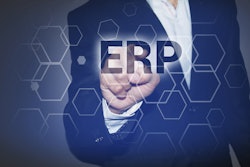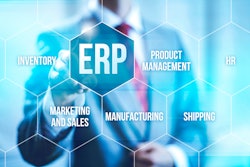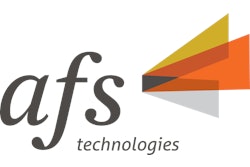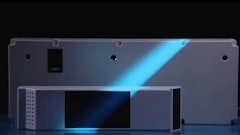
In these days of plunging profit margins and lower retail expectations, warehouses, distribution centers and production facilities need to find ways to lower their bottom line in order to survive. More and more, companies are turning to their enterprise resource planning (ERP) software systems as their primary tools to cut costs and manage such things as purchasing, labor, inventory, customer service and order tracking.
In addition, companies are using their ERP systems to find sources of "hidden cash" that are waiting for them to tap into.
"The rich functionality in ERP software for the food distributor has really come a long way in the past five years. Processes like rebate and chargeback management, line buying and purchase order optimization are now available right out of the box, no modification," says Paul Pretko, industry principal for wholesale distribution, for SAP, Newton Square, PA.
Rebate tracking, which is considered a form of "cost recovery," is an incredibly involved process that would require hundreds of man hours if it was done manually; with very little assurance that some asset recovery opportunity wasn't missed.
"These are typically purchase-based rebates," says Pretko. "An example would be if a distributor such as U.S. Food Service makes an agreement with Heinz on condiment procurement, which says: 'if you purchase 10 percent more product than you did last year, we'll give you an additional six percent discount on all purchases.'"
In this scenario, he says, the distributor would have to accrue all the transactional information from all of its purchases orders and bundle them up in order to create an open vendor AR account for the amount they'd expect Heinz to send them in a rebate check.
"If it's done manually, you're looking at tens of thousands of transactions and hundreds of different agreements," says Pretko. "You can easily have leakage where you should have received a check for a certain amount, however you received less. Trying to manually find the evidence to prove it is practically impossible."
Not only can an ERP system help accrue all the information necessary to prove rebate scenarios, it can also prompt distributors regarding rebate requirements.
"Our order entry and purchasing modules, when combined, have the ability to track rebates that you can get from manufacturers in order to make sure the claim is met," notes Kurien Jacob, CEO of AFS Technologies Inc., Phoenix. "If Kraft says you need to buy 100,000 cases a month to get a 10 percent rebate, the system will track that and not only tell you you need to claim the 10 percent, but if you've only purchased 95,580 cases and you have five days left, it will prompt you that you need to buy the rest of the cases. If you don't claim your rebates, it's lost money."
Jacobs says most of his company's customers will recover the cost of their system within the first year of ownership, just by tracking their rebates.
ERP systems also allow food manufacturers themselves to keep track of all the rebates that their customers are allowed to claim.
"Say a store has a deal with Odom's Tennessee Pride sausage that involves a $10 dollar rebate for putting the product in the front of the frozen food section and for placing an ad in the paper," says Rory Granros, global director of process industry marketing for Infor, Alpharetta, GA. "If the store sells $100 worth of sausage and they're expecting an invoice for $90 back, but Tennessee sends them one for $95, it could lead to questions, even withheld payment."
At that point, Odom's can go into the Deduction Workbench portion of its ERP system and see all the things its salesperson had in the contract for that deal, in order to justify the invoice amount. Perhaps the local sales rep went to the store and verified the product was not in the front section of the freezer, but was located in the traditional freezer section instead and this was why Odom's billed them back the extra five dollars. Because the system allows the manufacturer to flag such exceptions in the order, they can provide proper reconciliation.
"We handle all of this through the promotions portion of Adage--our ERP system," says Mike Hader, director of IT, for Odom's Tennessee Pride, Madison, TN. "It creates the entries for the general ledger so that it flows right through our financials and then we set up accruals designed to accrue whatever the stores' promotional allowances are supposed to be. The system makes sure they get the proper credit at the end."
Tracking Chargebacks
ERP systems can help companies make sales-based cost recoveries, typically from manufacturers. "Suppose a company quotes on a bid for a county public school system to provide all the food for them," says SAP's Pretko. "To get the business Heinz has to offer a deal to the school system that is at a price lower than the distributor's price."
The idea is that the distributor will provide a proof of sale back to the manufacturer any time it ships ketchup to the schools and Heinz is supposed to make it up on the back end.
"Of course manufacturers always question these claims later on," says Pretko. "The first thing they say is: 'who approved that agreement?'"
Pretko says the ERP system can attach documents to the agreement that the distributor will be able to pull up, including emails verifying the agreement from the manufacturer. "The second thing they say is that 'I don't believe this amount is correct. I need it itemized.'"
Fortunately the distributors' ERP system can capture every single sales order that goes to the school district against that agreement, time stamped and auditable, thereby providing the empirical evidence required.
Demand Tracking
"Another area that ERPs can save our customers money in is through purchasing," explains AFS' Jacob. "The cost of money and credit is high and companies need to make sure they don't buy too much inventory, while at the same time making sure they have the product that they need on hand when they need to ship it.
ERP systems like the one AFS sells show buyers what the right quantities of goods to buy are, based upon ordering histories from years' past. This provides an accurate clue as to what they will need to fill their current orders.
"We roll up our demand daily," says Odom's Hader. "This allows us to see for every single thing we make, what our outstanding orders are and what's due to ship tomorrow and the next day."
His company micromanages that demand against inventory so that they know precisely what raw materials they need and what they need to make more of--all because they can compare daily orders and demand against daily purchasing.
Being able to get more out of their resources with demand planning and being able to identify seasonal demand trends allows companies such as Odom's to increase their revenue streams.
Savings Through Efficiency
ERP systems can be utilized to allow companies to track their fuel consumption, an important consideration in these days of $300 barrels of oil, especially when most companies transportation management systems are geared up for $50 barrels.
"An ERP system's main function is the aggregation and gathering of data and putting it into a common format so you can make informed decisions," notes Greg Smith, associate partner, business solution professional consumer packaged goods industry, IBM Global Services, Armonk, NY. "Inputting this data into the ERP system allows them to determine the true cost of their fuel spend."
Once a company has this baseline understanding, it can begin to interpolate the data via a transportation management system, in order to find ways to reduce the spend. It may take such actions as combining routes and other cost-cutting strategies.
Another way ERP systems can increase efficiency is through the creation of shared service models. For example, an organization with multiple locations may have food buyers at each branch and this could lead to duplication of efforts.
"You can use the system to consolidate the spend and buy your goods centrally from the main warehouse," says Paul Pretko, industry principal for wholesale distribution, for SAP, Newton Square, PA. "That leaves only locals buys, such as produce, to be done at each of the locations."
Instead of having five buyers in each branch, a company could downsize to perhaps two buyers.
An ERP system can also help warehouses streamline labor and the number of people a warehouse has "touching a case."
"ERP systems enable automated and efficient warehouse management techniques that reduce the number of people you need to operate a warehouse," Pretko explains.
One way is by facilitating cross-docking. The system can target goods that can be taken off the inbound and moved directly to staging areas--and from there directly to the outbound. It can also direct workers to perform "interleaving" techniques--combining tasks in order to save time--such as combining put away with picking tasks so that workers aren't returning from aisles with empty forklifts.



















